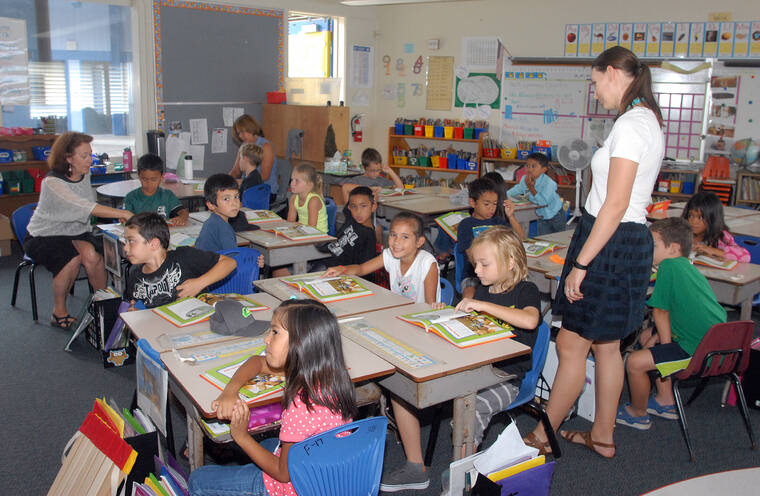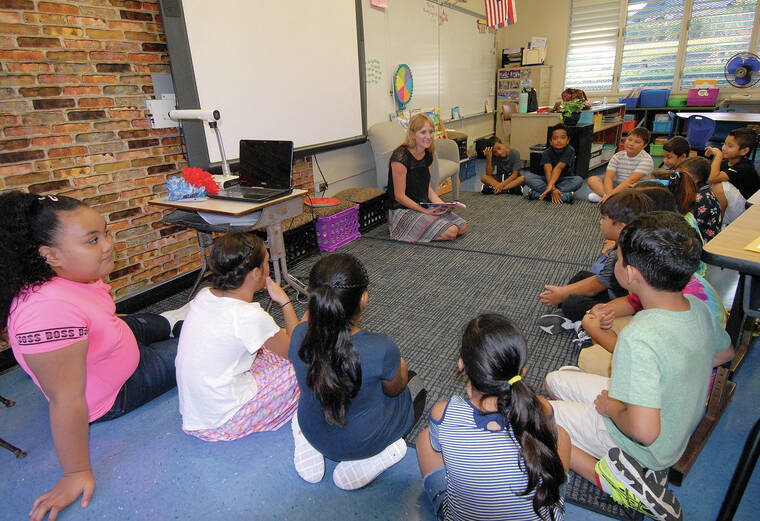Construction is anticipated to begin next spring on a new classroom building for pupils at Kealakehe Elementary School.
Honolulu-based Nan Inc. was the apparent low bidder for the project putting in an offer of $16.125 million, more than $3 million over the project’s estimated cost of $13 million. Also submitting bids were F &H Construction at $16.34 million and Isemoto Contracting at $17.93 million.
Though the project came in well over budget, it was expected amid the current economic climate and the state Department of Education said Tuesday it is moving forward with the two-story, 7,056-square-foot classroom building project on the kindergarten through fifth-grade campus.
Ige earlier this year released the $14.9 million that had been allocated for the project’s construction and design, which wrapped up this month.
“Additional allotted funds from Act 88 Session Laws of Hawaii 2021, Item G-6 were identified in anticipation of the increases in material costs and supply chain delays,” said Krislyn Yano, a communications specialist with the Department of Education.
Construction is estimated to begin once all permits are obtained, which will likely be in May 2023. Work is anticipated to take about 550 calendar days.
“The anticipated completion by the end of 2024 would allow the school to occupy the building for the 2025 spring semester,” said Yano.
The new classroom building will include four general education classrooms, one special education (SPED) self-contained classroom, one itinerant room, one faculty center, one conference room, and one custodial room. The classrooms are designed to be flexible to accommodate a variety of grade levels.
In addition to the program spaces, the building will also include restrooms and a communications room, as well as mechanical and electrical rooms, according to the DOE.
“This new facility, tucked into a challenging, sloping site on the Kealakehe Elementary School campus, will provide the students and staff with state-of-the-art classrooms, meeting rooms and covered lanai learning spaces to support their school experience,” Yano said.
The school, established in 1969, currently has 32 classrooms and 26 portable buildings.


